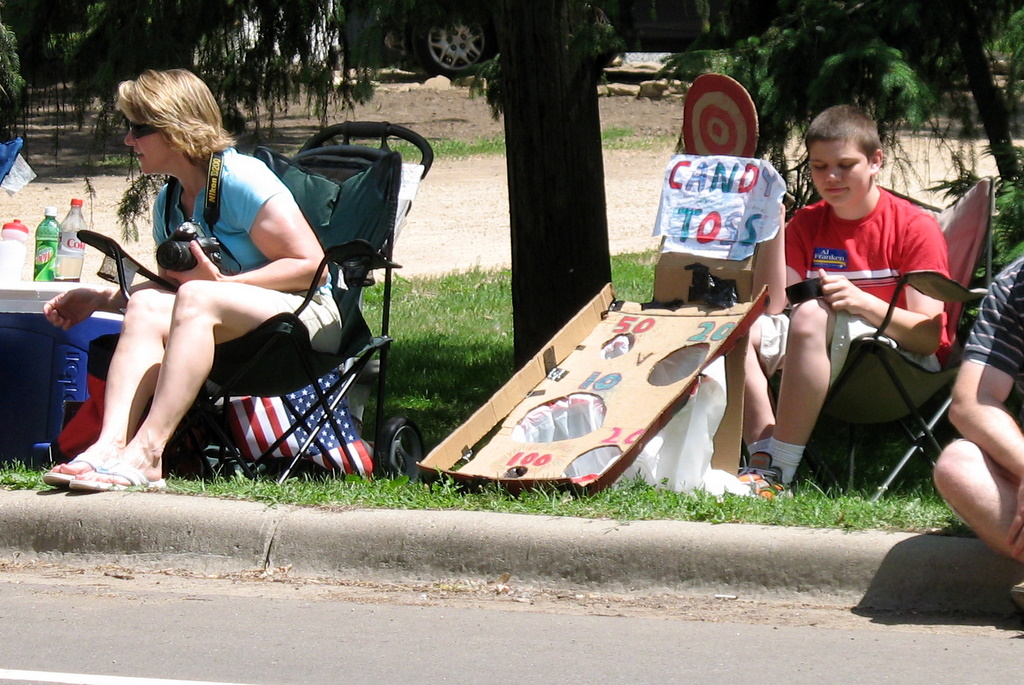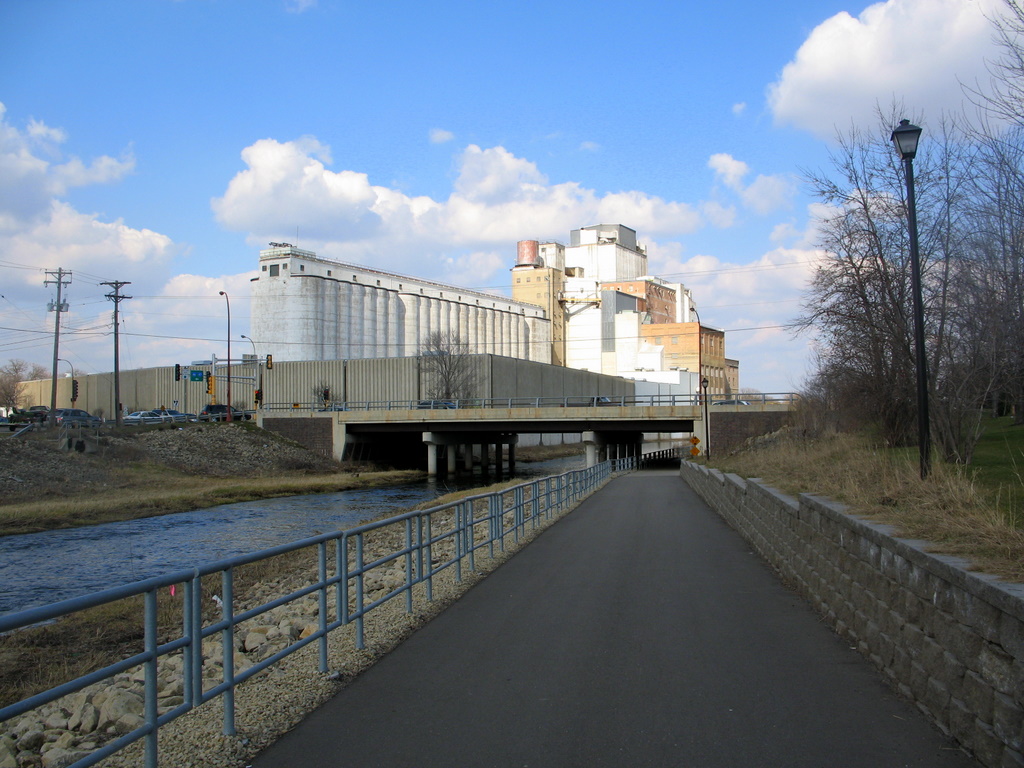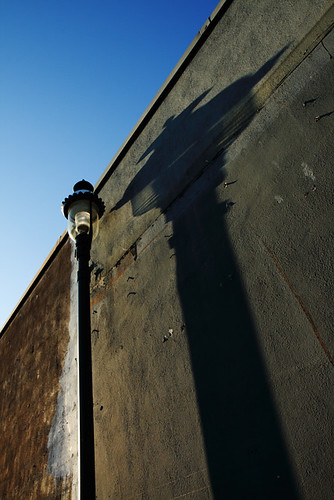
I just finished my 2nd Annual month-long Amtrak trip using the new "
now available to US Citizens"
USA RailPass. And the train has been just as terrible and wonderful as I'd expected. Here's a rundown on where I've gone on the train, and roughly how long and late each ride has been:
- MSP to Chicago -- 12 hours (5 hours late ... due to extreme flooding)
- Chicago to New York -- 23 hours (3 hours late)
- New York to Durham, NC -- 10 hours (2 hours late)
- Winter Haven to Tampa, FL -- 2.5 hours (30 min. late)
- Dallas to Austin -- 7 hours (4 hours late)
- Austin to Chicago -- 34 hours (7 hours late)
- Chicago to MSP -- 6 hours (on time!)
As much as I love the train, unless you're a student on summer break or a retiree it's hard to justify taking the Amtrak. There are just soooooo many really frustrated passengers, and every time the train would come to a halt in the middle of a cornfield, you could just feel the energy of grinding teeth flow through the cars. Riding on the Amtrak, you learn quickly that the it's all about the journey, not about the destination.
On almost every ride, the on-time problems were caused by the mingling of freight and passenger traffic on the same tracks, combined with seemingly endless repair work on our nation's aging infrastructure. It's an intractable problem, and it's what keeps our US intercity rail system right on par with the nations of Kazakhstan and Belarus. The only solution is to invest in added rights of way for passenger rail and/or freight. If done correctly, rail trains could easily double their average speed, up to something on par with auto transport. (70 - 80 mph?... typical averages were more like 40 mph., stops included.)
(New train cars wouldn't hurt either. Many of the train cars are really showing their age, and the
NYT just reported that they only have 632 useable cars for the whole country!)
Here are some of the more oddball reasons why I like riding the train:
Oddball Reason #1 -- It's the most comfortable way to travel. No question about this one.* Even in coach, you get a nice big seat that's really wide, leans way back, and has two different types of footrests. Plus, you can get up and walk around, hang out in the lounge (which is kind of a coffee shop / bar with a really great view), or go to the dining car where you get pretty tasty (though overpriced) food that you eat with a real knife and fork made from metal. Compared to planes or cars, there's just no contest. Plus the pullman cars are even cushy, and apparently contain showers and small pull-down beds (though they're also quite expensive).
And I can actually sleep on the train. I find that there's something about the rhythm of the wheels and the way the carriage rocks back and forth that is condusive to REM. I sleep OK in cars, but it's not as comfortable. And I've never, ever been able to sleep on an airplane worth a damn.
Oddball Reason #2 -- America is beautiful.Looking out the window, you get to see river valleys, old industrial neighborhoods, and backyards. As nice as it is to look out the windows of airplanes to see the abstract patterns of farm fields and top-down mountains, it's far better to see the bright lights of high school kids playing baseball in the small town twilight, or the sun rising over farm fields in the Ozarks. It's like freakin' Norman Rockwell out there.
Plus, from the train window you will almost never see a billboard, gas station, or a McDonald's. Try saying that about our interstates.
Oddball Reason #3 -- You can meet people.Whether it's the person seated next to you, the family in the lounge car, or the retired couple across from your table in the dining car, you meet tons of people while you ride the train. And, unlike meeting strangers in just about every other context in the USA, it's not awkward.
I had interesting conversations with so many people. To wit:
- I talked with a mother and her two young sons from Forth Worth, TX who was on her way to visit her sister in Chicago. I played computer games with the younger son, probably about 10 yrs old, who showed me his new XO laptop.
- I made friends with a guy about my age who was traveling from Chicago to upstate New York, who was on his way to raise the final capital funds to start a new business that would be like "AAA for homeowners".
- I chatted with a father and his young daughter over dinner, who were on their way from Yuma to Boston in a sleeper car. He worked for the US border agency, and told stories about the crazy things he's seen in the no-man's land.
- I made friends with a guy about my age who was just about to begin a job teaching computers to disadvantaged high school students in Chicago. We talked for a long time about US foreign policy, politics, and the internet. Plus, he plays in a band and gave me a copy of his latest, not yet released, album. It's pretty good!
- I talked with a young high school kid on in the lounge car on a train from Orlando to Tampa who was going to visit his mother. He told me that after he graduates he was going to school be a radiologist.
And there were more conversations that I probably can't remember. The train is a real slice of life.
And this isn't even to mention the other reasons why train travel is a good idea, the stuff about land use (airports are big and out of the way), energy efficiency (
trains are more efficient), and environmental impact (ditto).
There's no doubt in my mind that, if they ran on time, passenger trains in the USA would be wildly popular.
* Though I've never been on one, I suppose an ocean liner is more comfortable, all things considered. However, it's awfully hard to take an ocean liner from here to Chicago.Also:This is an interesting tidbit I discovered about the history of the MSP -- Chicago rail corridor.
The testing ground for the economics of high-speed service was the corridor between Chicago and Minneapolis-St. Paul. Between these cities "there was probably more transportation competition than anywhere in the world," noted Fortune magazine. In 1935, Ralph Budd first took on the competition--Greyhound, Northwest Airlines, and the family car--by announcing a six-and-one-half-hour run between Chicago and the Twin Cities. Diesels would make the trip in three and one-half hours less than steam-driven trains (and 115 minutes faster than Amtrak does today). Thus were born the Twin City Zephyrs, with Budd-built cars and GM-powered engines. Believing their corporate honor was at stake, both the Chicago & North Western and the Milwaukee Road responded by introducing their own streamliners, matching the Burlington's scorching pace and its comfortable seats, air-conditioning, elegant dining cars, and reduced round-trip fares. "If transportation competition ever justified itself, it did here," Fortune said. The new service resulted not in the waste of facilities but in their highly profitable use. The Milwaukee's Hiawatha immediately started to gross well over $3.50 a mile, or three times its operating expenses. The Twin Zephyrs carried an average of 316 people a day (up from 26 through passengers on average under the old steam regime), and the C & NW's 400's performed equally well. Greyhound offered discount fares and even attached trim to the sides of its buses in an effort to imitate the streamliners, but to no avail. Additional fast trains were scheduled. Overall, the railroads carried more than four million passengers between Chicago and the Twin Cities between 1935 and 1939.
Also Also:
For those of you who really want to know more, the politics of (re)creating a high quality intercity rail connections between our US cities looks promising. If we elect Barack Obama in November, I think you'll see a lot of investment in rail corridors, particularly in the Midwest. Here's a quote from a recent article on the sea change in the federal government
One cannot overstate the importance of the federal government actually setting up a fund to match state passenger train investments on an 80-20 basis, a vast improvement over the current federal share of zero percent. Sen. Thomas Carper (D-DE), a former governor (and Amtrak board member) who should know, put it this way in yesterday’s Senate hearing on transportation and climate change: “When I was Governor of Delaware, if we wanted to build a road or a highway or a bridge, the federal government paid for 80% of it. If we wanted to do transit investment, the federal government provided 50% of it. If we wanted to invest, if it made more sense to put in inter-city passenger rail, the federal government provided nothing. And I’m sure we made investment decisions which were probably wrong decisions because of the difference in those measures of federal support.”
Also Also Also:Plus
this editorial from the NYT editorial board:
Apart from that misguided addition, the bills are good over all. The two bills — whose primary sponsors were Senator Frank Lautenberg of New Jersey and Representative James Oberstar of Minnesota, both Democrats — require more accountability from Amtrak, and the states. To get states to determine and address local needs, the bills wisely include incentives, like 80 cents in federal money to match every 20 a state spends on rail.
Also Furthermore:And here's a bit from a recent article on the
Midwest High Speed Rail Association newsletter, discussing how MN Congressman Jim Obserstar is working to rethink how the Federal Gov't allocates funding for rail projects. Oberstar taking over the Transportation Committee chairmanship is definitely the best thing every to happen in Minnesota land use politics.
It starts with a description of what Bush's transportation agency has been up to:
Instead, the Federal Transit Administration (FTA) has made a concerted effort to change project-scoring criteria to deny funding to rail projects and make it appear there is actually less demand for new rail projects. The end result is what they desired – divert federal dollars to new high-occupancy vehicle lanes on freeways and bus alter-natives that have little hope of encouraging denser, mixed-use developments around transit stops.
[...]
“It’s all an effort to move away from rail and it extends to high-speed rail, too,” said Boothe, a Washington D.C. political insider for 25 years. “It’s history repeating itself. They’re trying to kill off rail transit again.”
[...]
Boothe said there is hope in Congressman James Oberstar of Minnesota, a strong supporter of rail transit who took over this year as chairman of the House Appropriations Subcommittee on Transportation. Oberstar said he will hold oversight hearings in the coming months on the FTA’s scoring criteria for New Starts. “I’m optimistic we’ll get an airing of these (New Starts) issues,” Boothe said. “I hope that FTA realizes there’s a new sheriff in town.”
 Is it a sidewalk? I cannot be sure.
Is it a sidewalk? I cannot be sure. Even though it's been open most days for over a year, I'd never discovered Water Power Park until last week. I was taking a stroll down Main Street, one of the oldest and finest sidewalk spots in Minneapolis. I was enjoying that special feeling of sidewalk cafes, ambient Segway tourists, and my proximity to the legacy of liquid-fueled industry ... when all-at-once, I turned a corner and found a city park. I wandered in...
Even though it's been open most days for over a year, I'd never discovered Water Power Park until last week. I was taking a stroll down Main Street, one of the oldest and finest sidewalk spots in Minneapolis. I was enjoying that special feeling of sidewalk cafes, ambient Segway tourists, and my proximity to the legacy of liquid-fueled industry ... when all-at-once, I turned a corner and found a city park. I wandered in... [Sidewalk park strollers lean on a rail by a riverside pool to gaze at a Great Blue Heron gaze at a reflected skyline in a rippl'd riverside pool.]
[Sidewalk park strollers lean on a rail by a riverside pool to gaze at a Great Blue Heron gaze at a reflected skyline in a rippl'd riverside pool.]
 What I liked very much about Water Power Park was the way it drew you in. Frederick Law Olmsted, the famous park designer, included within many of his large park designs a section of park called "The Bramble", designed to be a place where people could wander, get lost, and lose themselves in nature.
What I liked very much about Water Power Park was the way it drew you in. Frederick Law Olmsted, the famous park designer, included within many of his large park designs a section of park called "The Bramble", designed to be a place where people could wander, get lost, and lose themselves in nature.
 What I liked very much about Water Power Park was the way it drew you in. Frederick Law Olmsted, the famous park designer, included within many of his large park designs a section of park called "The Bramble", designed to be a place where people could wander, get lost, and lose themselves in nature.
What I liked very much about Water Power Park was the way it drew you in. Frederick Law Olmsted, the famous park designer, included within many of his large park designs a section of park called "The Bramble", designed to be a place where people could wander, get lost, and lose themselves in nature.




































